Abstract
1. The possibility that a purine nucleotide is involved in excitatory transmission to the urinary bladder has been tested. All the purine compounds tested which contained a pyrophosphate bond produced contraction, adenosine triphosphate (ATP) being the most potent. Adenosine and adenosine monophosphate caused relaxation.
2. The response to ATP closely mimicked the nerve-mediated contraction, both being characterized by a rapid contraction which was not maintained. A lack of sensitivity to ATP was noted in some preparations of the rat urinary bladder.
3. Both nerve-mediated contractions and contractions caused by ATP were blocked by quinidine, while the response to acetylcholine persisted.
4. Nerve-mediated responses were depressed during tachyphylaxis produced by high concentrations of ATP. Tachyphylaxis did not occur when low concentrations were used. Possible explanations for these results are discussed.
5. The results are consistent with the hypothesis that non-cholinergic excitatory nerves to the guinea-pig bladder release a purine nucleotide, but do not provide critical evidence for it.
Full text
PDF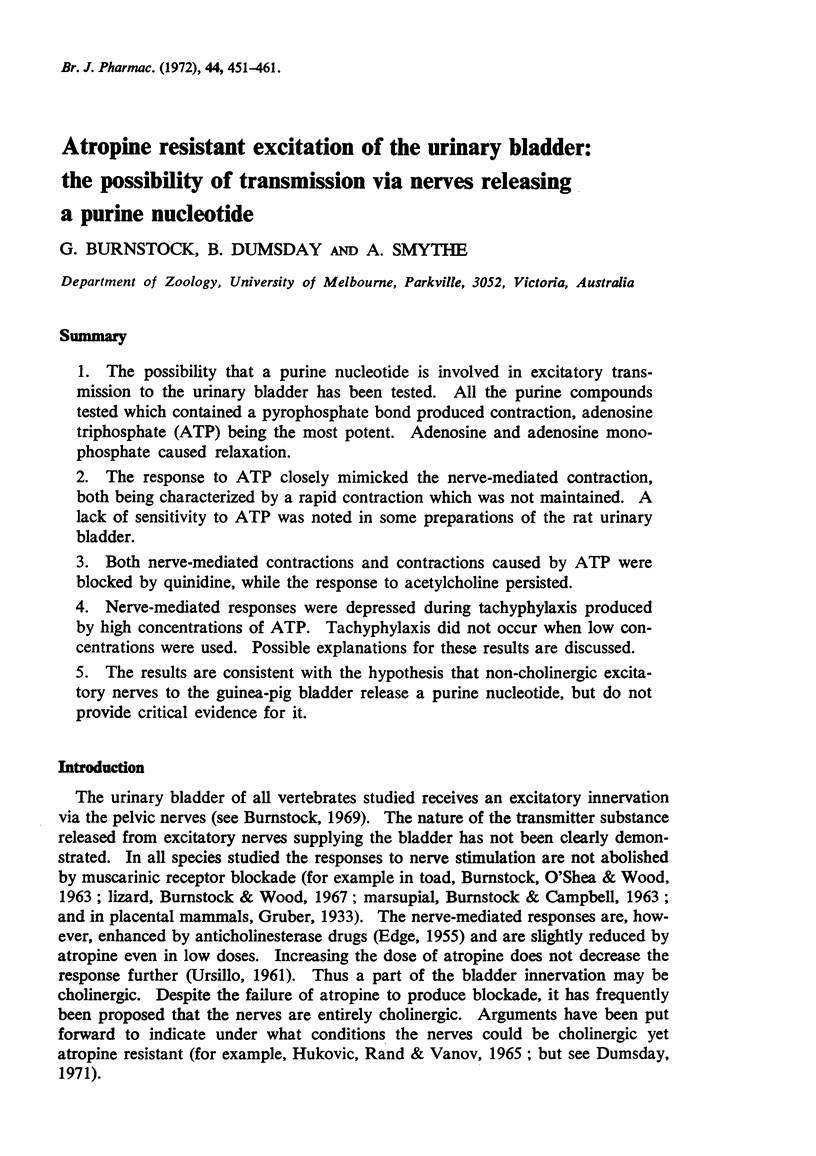
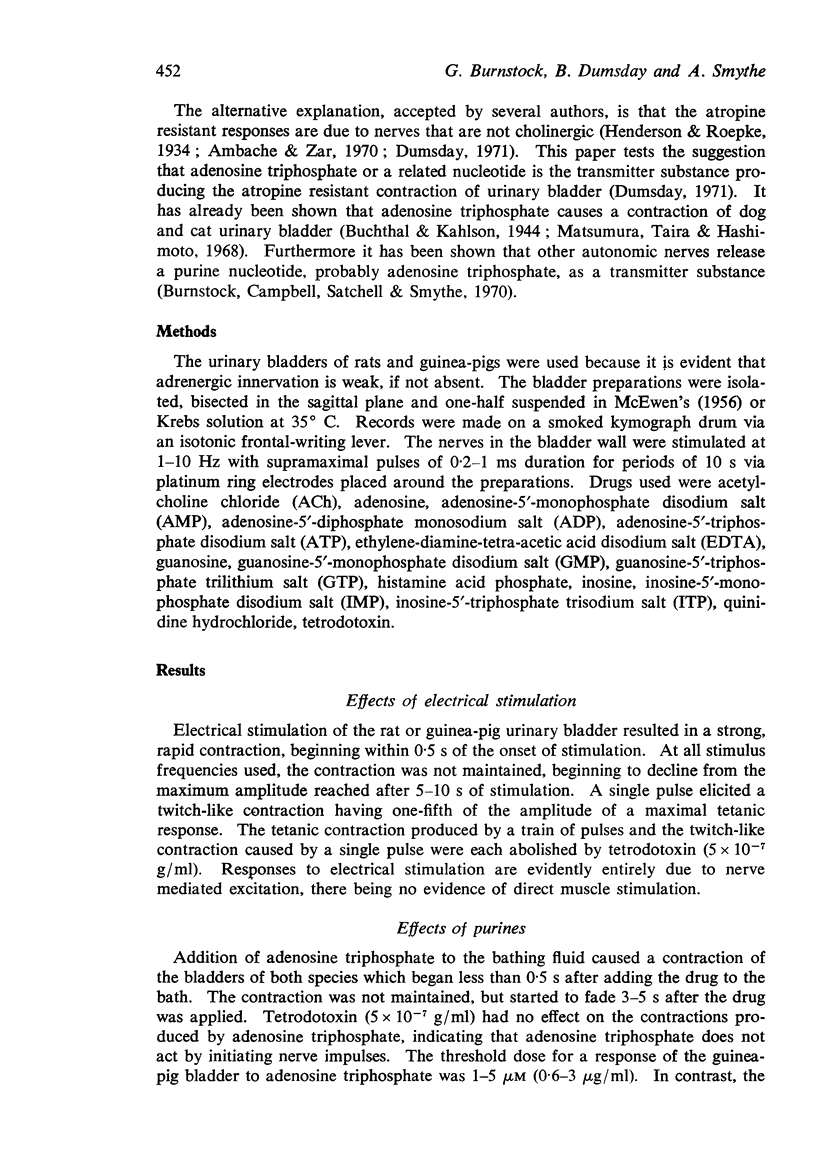
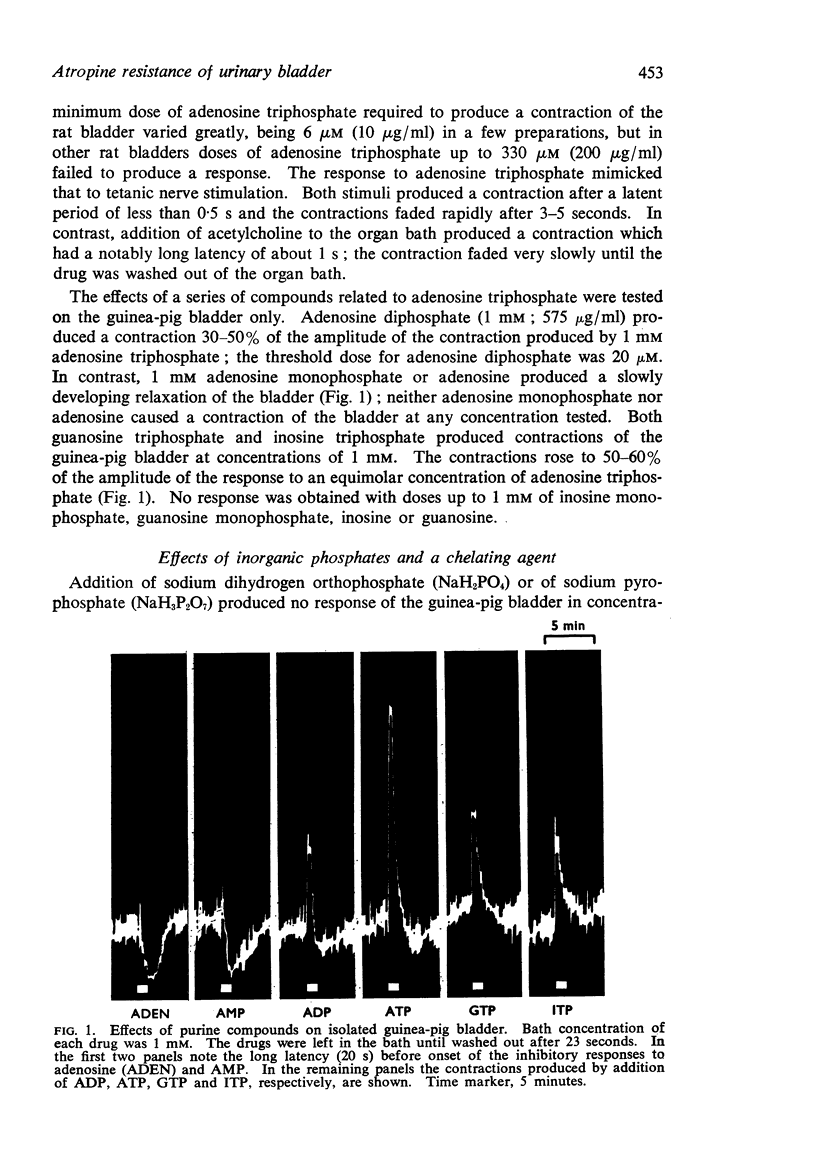
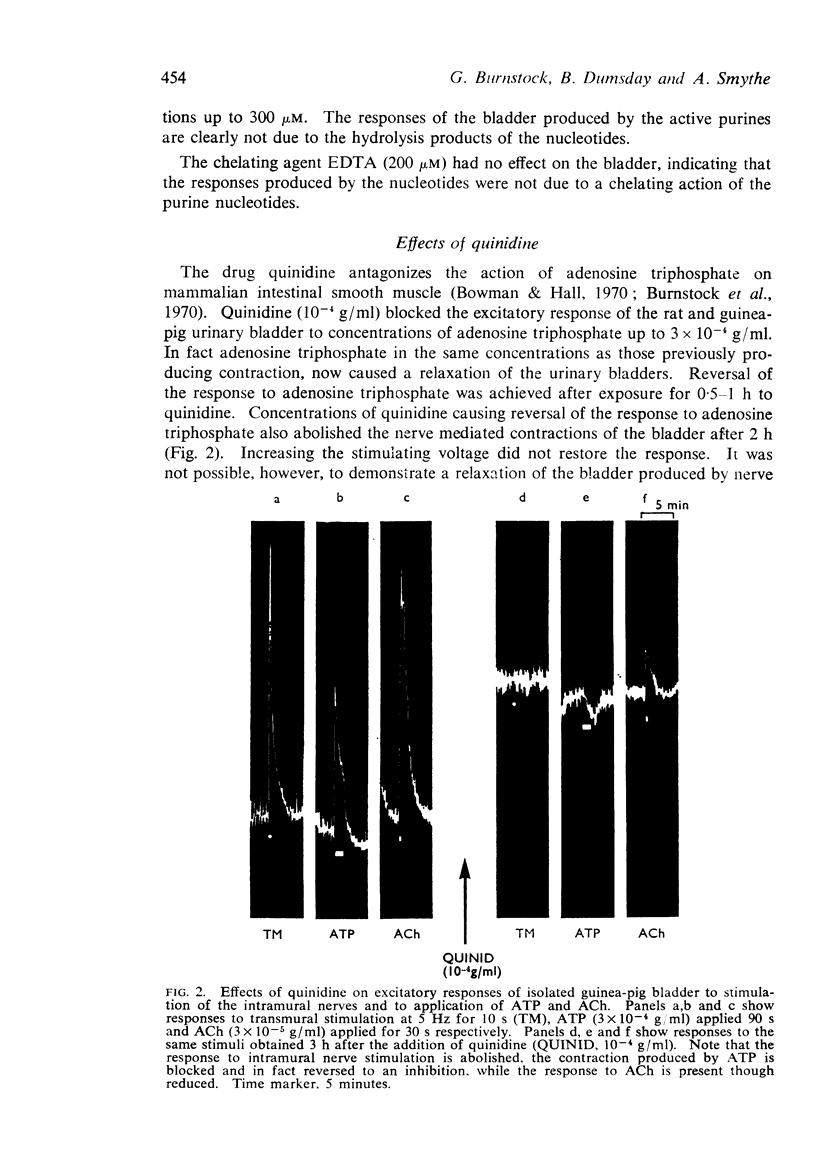
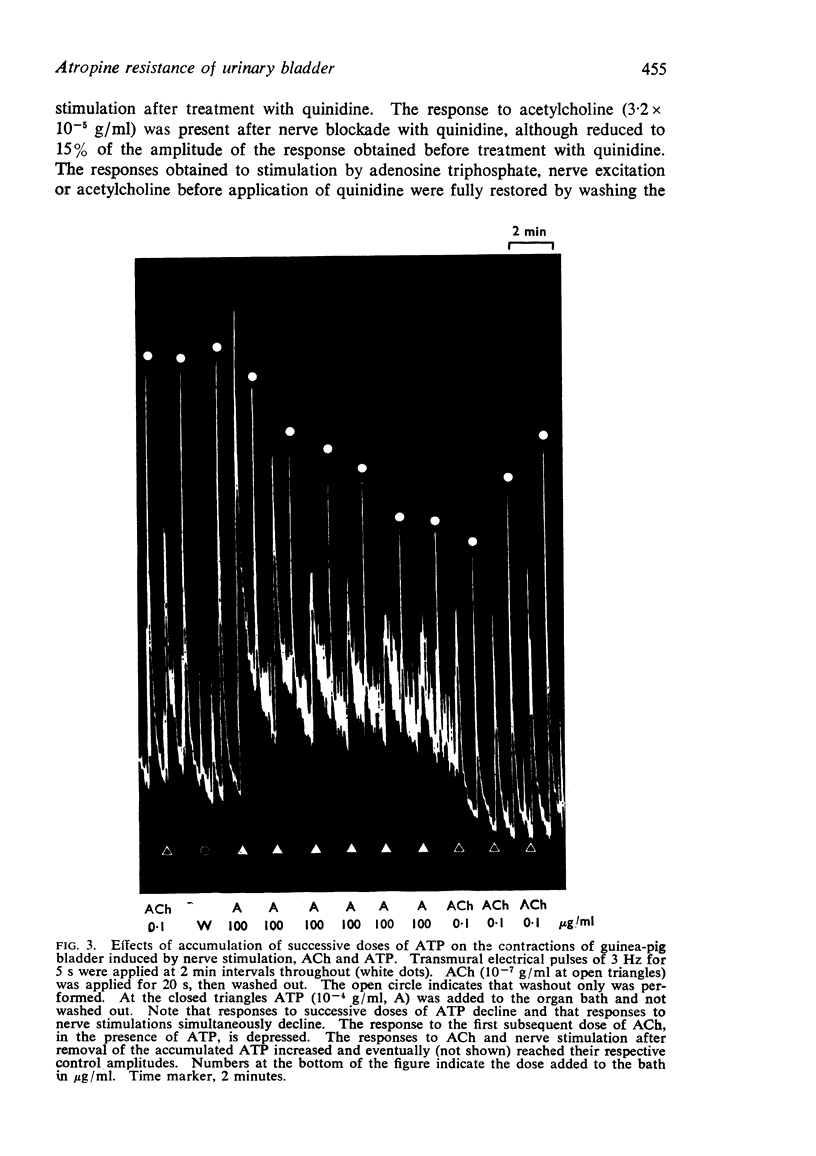
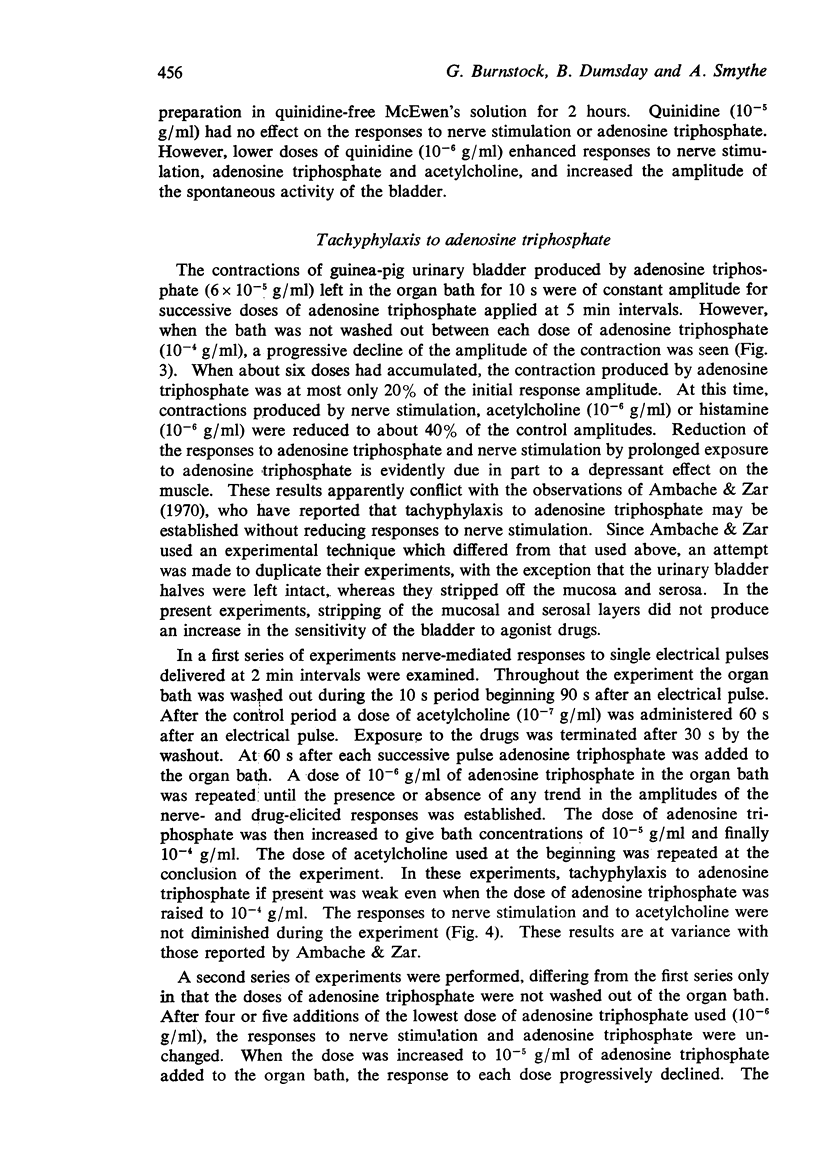
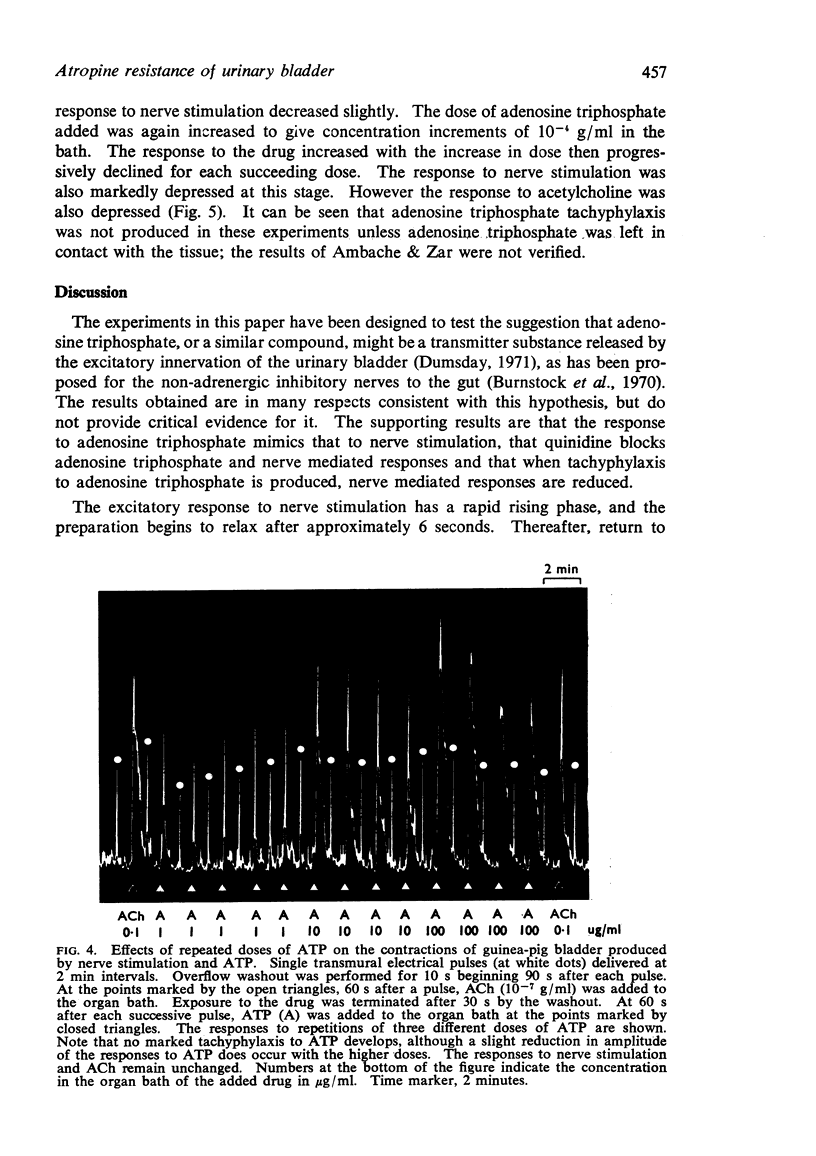
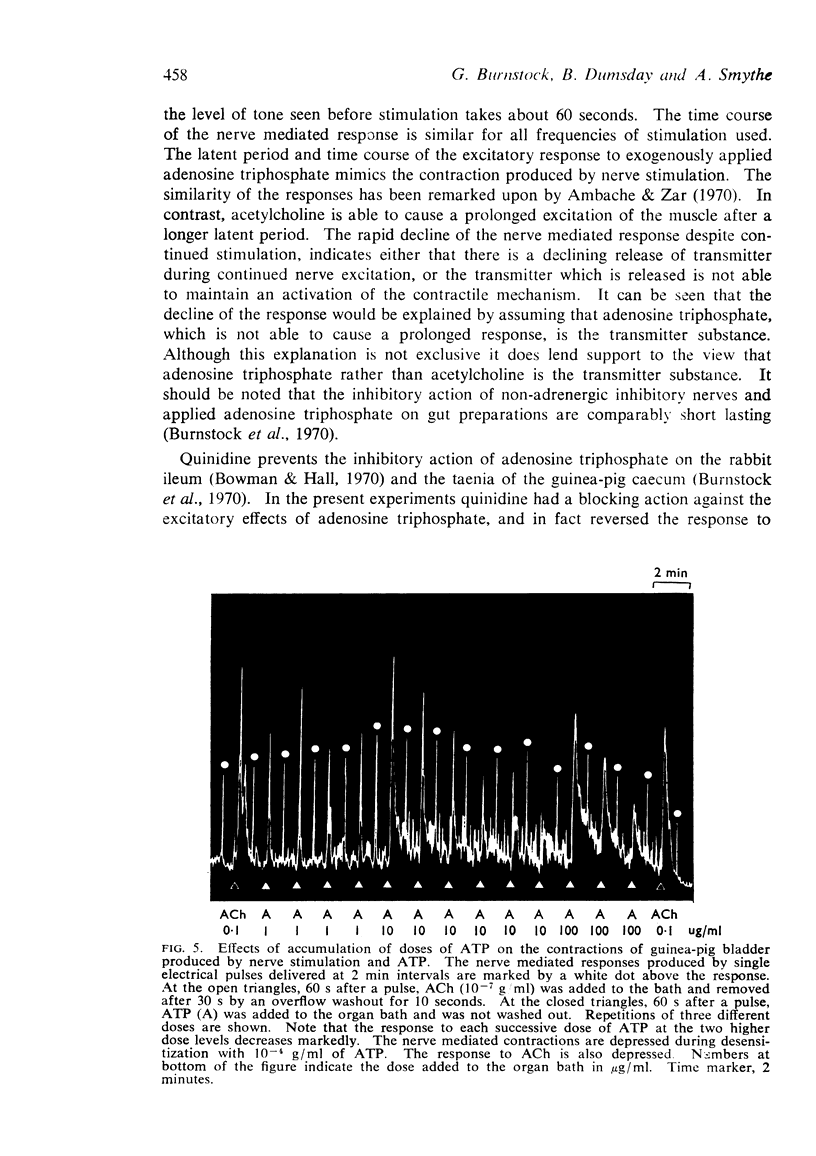
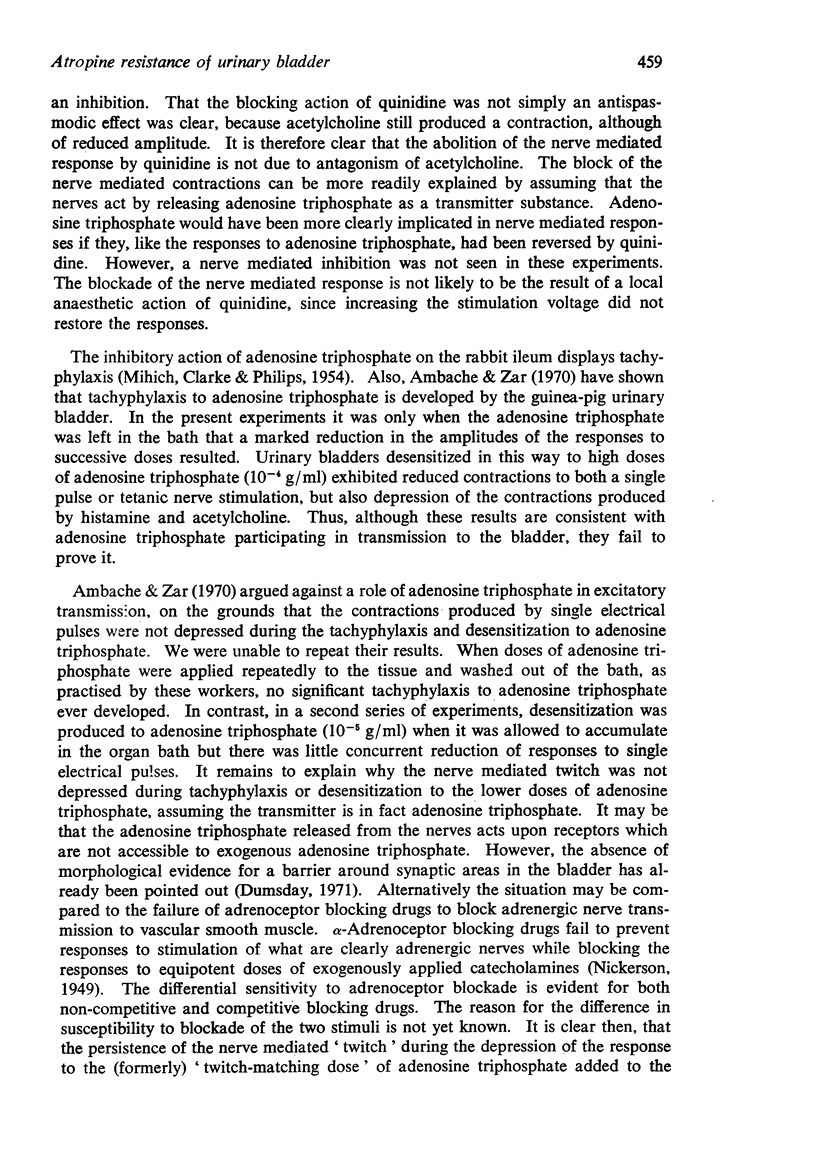
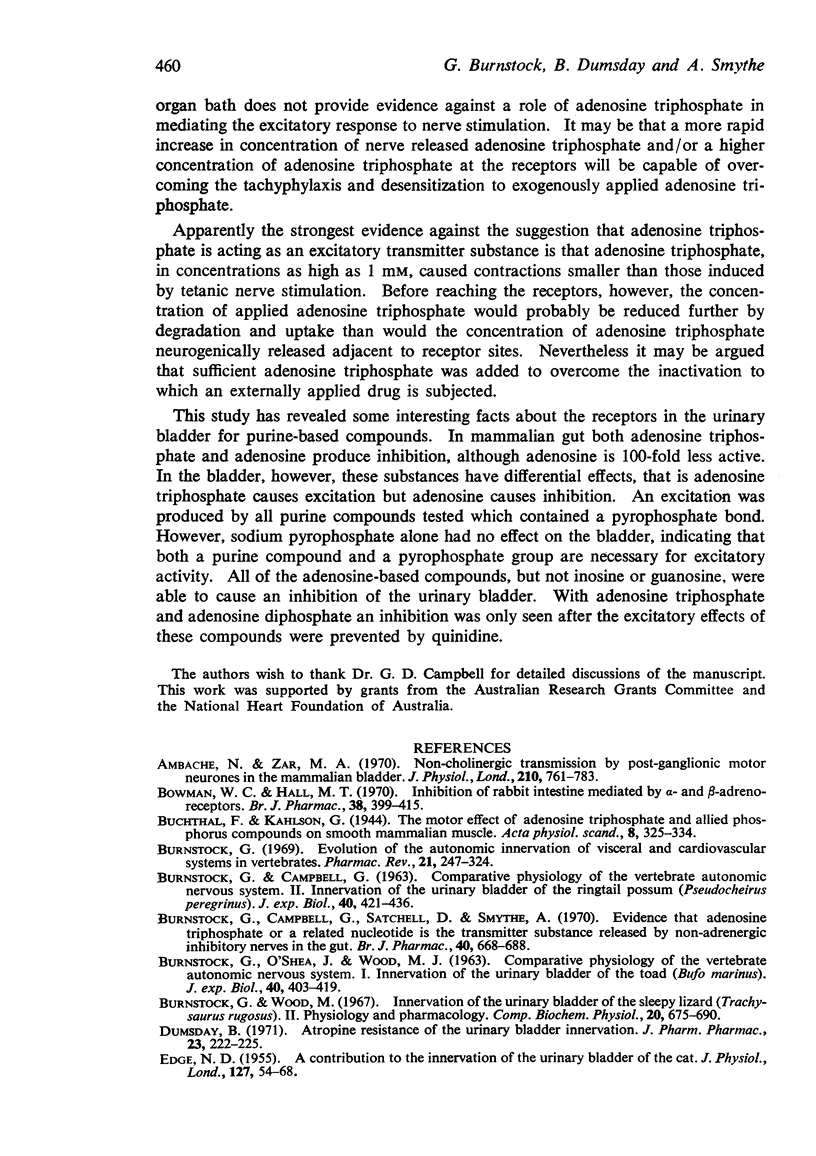
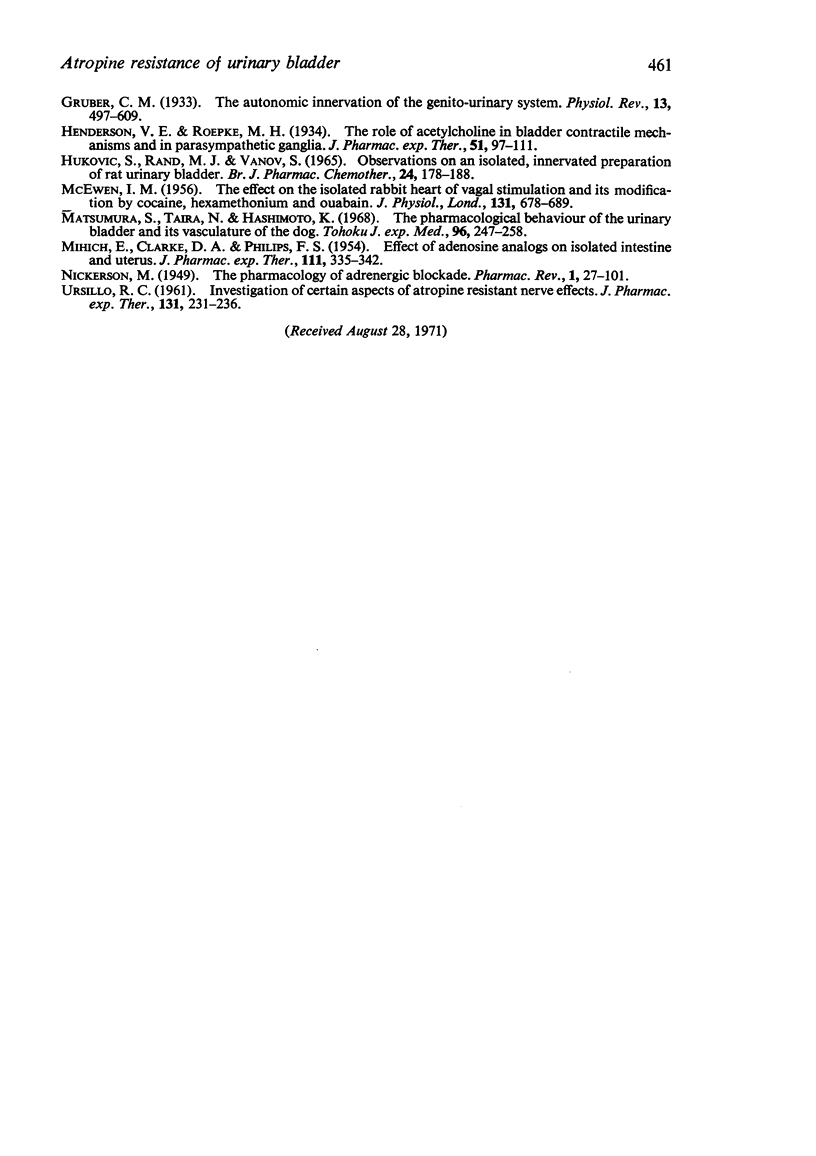
Selected References
These references are in PubMed. This may not be the complete list of references from this article.
- Ambache N., Zar M. A. Non-cholinergic transmission by post-ganglionic motor neurones in the mammalian bladder. J Physiol. 1970 Oct;210(3):761–783. doi: 10.1113/jphysiol.1970.sp009240. [DOI] [PMC free article] [PubMed] [Google Scholar]
- BURNSTOCK G., CAMPBELL G. COMPARATIVE PHYSIOLOGY OF THE VERTEBRATE AUTONOMIC NERVOUS SYSTEM. II. INNERVATION OF THE URINARY BLADDER OF THE RINGTAIL POSSUM (PSEUDOCHEIRUS PEREGRINUS). J Exp Biol. 1963 Sep;40:421–436. doi: 10.1242/jeb.40.3.421. [DOI] [PubMed] [Google Scholar]
- BURNSTOCK G., O'SHEA J., WOOD M. COMPARATIVE PHYSIOLOGY OF THE VERTEBRATE AUTONOMIC NERVOUS SYSTEM. I. INNERVATION OF THE URINARY BLADDER OF THE TOAD (BUFO MARINUS). J Exp Biol. 1963 Sep;40:403–419. doi: 10.1242/jeb.40.3.403a. [DOI] [PubMed] [Google Scholar]
- Bowman W. C., Hall M. T. Inhibition of rabbit intestine mediated by alpha- and beta-adrenoceptors. Br J Pharmacol. 1970 Feb;38(2):399–415. doi: 10.1111/j.1476-5381.1970.tb08528.x. [DOI] [PMC free article] [PubMed] [Google Scholar]
- Burnstock G., Campbell G., Satchell D., Smythe A. Evidence that adenosine triphosphate or a related nucleotide is the transmitter substance released by non-adrenergic inhibitory nerves in the gut. Br J Pharmacol. 1970 Dec;40(4):668–688. doi: 10.1111/j.1476-5381.1970.tb10646.x. [DOI] [PMC free article] [PubMed] [Google Scholar]
- Burnstock G. Evolution of the autonomic innervation of visceral and cardiovascular systems in vertebrates. Pharmacol Rev. 1969 Dec;21(4):247–324. [PubMed] [Google Scholar]
- Dumsday B. Atropine-resistance of the urinary bladder innervation. J Pharm Pharmacol. 1971 Mar;23(3):222–225. doi: 10.1111/j.2042-7158.1971.tb08649.x. [DOI] [PubMed] [Google Scholar]
- EDGE N. D. A contribution to the innervation of the urinary bladder of the cat. J Physiol. 1955 Jan 28;127(1):54–68. doi: 10.1113/jphysiol.1955.sp005237. [DOI] [PMC free article] [PubMed] [Google Scholar]
- HUKOVIC S., RAND M. J., VANOV S. OBSERVATIONS ON AN ISOLATED, INNERVATED PREPARATION OF RAT URINARY BLADDER. Br J Pharmacol Chemother. 1965 Feb;24:178–188. doi: 10.1111/j.1476-5381.1965.tb02093.x. [DOI] [PMC free article] [PubMed] [Google Scholar]
- MCEWEN L. M. The effect on the isolated rabbit heart of vagal stimulation and its modification by cocaine, hexamethonium and ouabain. J Physiol. 1956 Mar 28;131(3):678–689. doi: 10.1113/jphysiol.1956.sp005493. [DOI] [PMC free article] [PubMed] [Google Scholar]
- MIHICH E., CLARKE D. A., PHILIPS F. S. Effect of adenosine analogs on isolated intestine and uterus. J Pharmacol Exp Ther. 1954 Jul;111(3):335–342. [PubMed] [Google Scholar]
- Matsumura S., Taira N., Hashimoto K. The pharmacological behavior of the urinary bladder and its vasculature of the dog. Tohoku J Exp Med. 1968 Nov;96(3):247–258. doi: 10.1620/tjem.96.247. [DOI] [PubMed] [Google Scholar]
- URSILLO R. C. Investigation of certain aspects of atropine-resistant nerve effects. J Pharmacol Exp Ther. 1961 Feb;131:231–236. [PubMed] [Google Scholar]


